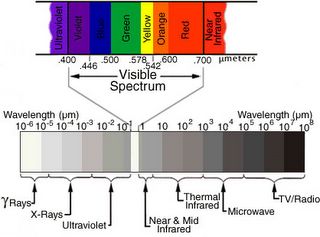Friday, April 21, 2006
Wednesday, March 22, 2006
Monday, February 27, 2006
Amazing book: Color

When I first laid my hands on this book I thought this might be a nice collection to my library. But I am really amazed at the wealth of information contained in the book. Victoria writes the books as if we are stealthy travellers taking a peep into history, stealing secretly guarded recepies of pigments from all over the world. I shall keep posting excerpts from the book when I am a little less preoccupied, but for the time being here is some trivia.
The blackest of black came from burning human bodies. One of the best red is extracted from human blood and of course from cochineal. The cohineal are harvest in desert by acres and then squashed to get the firery red that is in demand all over the world. White happens to hide the deadliest secret behind its veil of purity. Its one of most poisonous pigments on the palette.
More later...
Tuesday, January 24, 2006
The story of Black
 What color is most associated with evil, or ill omen? To represent death, darkness, suppression, and wickedness, we use black more frequently than any other color. Japanese language has a term "haraguroi (black abdominal), " while English has a term "black hearted," both referring to an evil-minded person. Black signifies mourning and sorrow in many cultures, like the Mayan, Hindu, African and Christanity. The Hindu culture even shuns wearning black clothes for festive ocassions like marriages.
What color is most associated with evil, or ill omen? To represent death, darkness, suppression, and wickedness, we use black more frequently than any other color. Japanese language has a term "haraguroi (black abdominal), " while English has a term "black hearted," both referring to an evil-minded person. Black signifies mourning and sorrow in many cultures, like the Mayan, Hindu, African and Christanity. The Hindu culture even shuns wearning black clothes for festive ocassions like marriages.Even though black has such a negetive connotation in cultural representations it stands for mysticism, beauty and awe. The veil of black entices people to explore whats hidden beneath, but no matter how much they try to unravel, the mystery becomes even more intense, forever out of their reach. Which bring us to another property of black, it symbolises aloofness. It is the color of power, of elegance and it lends to the timelessness of the one who dares to adorn it and is worthy of it. It is interesting to notice how some people look fabulous in black dresses but most of them just get completely engulfed by the color. Black represent the height of beauty and of sensuality and it has been used to depict this in art over the years. It is believed to be a color of silence and concealing. Yet, the color sometimes "talks" even more eloquently than any other tone.
Black happens to be my favourite color because it tends to bring out the best of other colors around it. It adds to the depth and meaning of any creation. Speaking metaphorically it accentuates the salience of whats good around it, more so by providing a stark contrast to it.
Its extremely difficult to see the true balck color, beacuse you need to cut out all light sources. Try peeping inside a truly black box and you'll realise what it feels like. I think getting up one day when you see nothing around you but pitch darkness would be really intimidating.
Black has a great influence on the psychological state of our minds too. When our are experiencing various complex feelings, perhaps our mind becomes like a melting pot, mixing diverse items, and then our feelings become darker and darker until they all become pure black color.
Color coordinates:
RGB : (0,0,0)
CMYK : (0,0,0,100)
Friday, June 03, 2005
Generic Colorspaces
RGB uses additive color mixing, because it describes what kind of light needs to be emitted to produce a given color. Light is added together to create form from out of the darkness. RGB stores individual values for red, green and blue. RGBA is RGB with an additional channel, alpha, to indicate transparency.
Color spaces based on the RGB model include sRGB, Adobe RGB and Adobe Wide Gamut RGB.
CMYK uses subtractive color mixing used in the printing process, because it describes what kind of inks need to be applied so the light reflected from them produces a given color. One starts with a white canvas, and uses ink to subtract color from white to create an image. CMYK stores ink values for cyan, magenta, yellow and black.
YIQ is used in NTSC (North American) television broadcasts for historical reasons. YIQ stores a luminance value with two chrominance values, corresponding approximately to the amounts of blue and red in the color. It corresponds closely to the YUV scheme used in PAL television except that the YIQ color space is rotated 33° with respect to the YUV color space. The YDbDr scheme used by SECAM television is rotated in another way. (work needed)
YPbPr is a scaled version of YUV. It is most commonly seen in its digital form, YCbCr, used widely in video and image compression schemes such as MPEG and JPEG.
HSV is often used by artists because it is often more natural to think about a color in terms of hue and saturation than in terms of additive or subtractive color components. HSV stores a hue value, a saturation value and an intensity value.
HLS is quite similar to HSV, with lightness replacing intensity value.
Friday, May 27, 2005
Spectral Colors
A spectral color is composed of a single wavelength. For eg. spectral orange has a wavelength of around 600 nm. When we see the emission spectra of certain gases like hydrogen and neon they emit a characterstic spectra which is used in the identification of the gases. This is called electromagnetic spectroscopy.
So what colors are not spectral. Some common examples are white, black and gray. There is no wavelength of light that produces white color. Its just the cummulative result we see when equal amount of light of different wavelengths are reflected completely from a particular object. Black is when no color is reflected from an object. Gray represents the scenario when all the wavelenghts are equally absorebed/reflected by the object. Some other exams are pink, shades of violet, magenta.
Most of the color we see around us is non spectral in nature. Consider your CRT monitor. Its is composed of RGB phospors which combine to give you the 32bit colors. When orange is displayed on your monitor its in not the actual 600nm wavelength that is emitted by the phosphors. Its is a combination of 2parts of red and one part of green which gives you this color.
Why do we interpret both as the same color??
Becoz in the brain, the receptors do not respond to specific wavelengths. They respond to a variety of wavelengths. So lets say when the spectral orange hits the eye it illicits response in the red and the green cones. The response in the green cones is about half the response in the red cones. And the summation of the two responses help in identifying the color as orange. When the cones are stimulated using the mixed color from your CRT lets say a similar respose is generated in the brain again giving rise to the orange color.
Thursday, March 24, 2005
Electromagnetic Spectrum

Electromagnetic radiation is a mixture of radiation of different wavelengths and intensities. When this radiation has a wavelength inside the human visibility range (approximately from 380 nm to 740 nm), it is called light. The light's spectrum records each wavelength's intensity. The full spectrum of the incoming radiation from an object determines the visual appearance of that object, including its perceived color. As we will see, there are many more spectra than color sensations; in fact one may formally define a color to be the whole class of spectra which give rise to the same color sensation, although any such definition would vary widely among different species and also somewhat among individuals intraspecifically.
A surface that diffusely reflects all wavelengths equally is perceived as white, while a dull black surface absorbs all wavelengths and does not reflect (for mirror reflection this is different: a proper mirror also reflects all wavelengths equally, but is not perceived as white, while shiny black objects do reflect).
The familiar rainbow spectrum?named from the Latin word for image by Isaac Newton in 1666?contains all those colors that consist of visible light of a single wavelength only, the pure spectral or monochromatic colors.
The frequencies are approximations and given in terahertz (THz). The wavelengths, valid in vacuum, are given in nanometers (nm). A list of other objects of similar size is available.
The color table should not be interpreted as a definite list?the pure spectral colors form a continuous spectrum, and how it is divided into distinct colors is a matter of taste and culture; for example, Newton identified the seven colors red, orange, yellow, green, blue, indigo, and violet, remembered by many school children using mnemonics such as Roy G. Biv and Richard Of York Gave Battle In Vain.
Similarly, the intensity of a spectral color may alter its perception considerably; for example, a low-intensity orange-yellow is brown, and a low-intensity yellow-green is olive-green.
